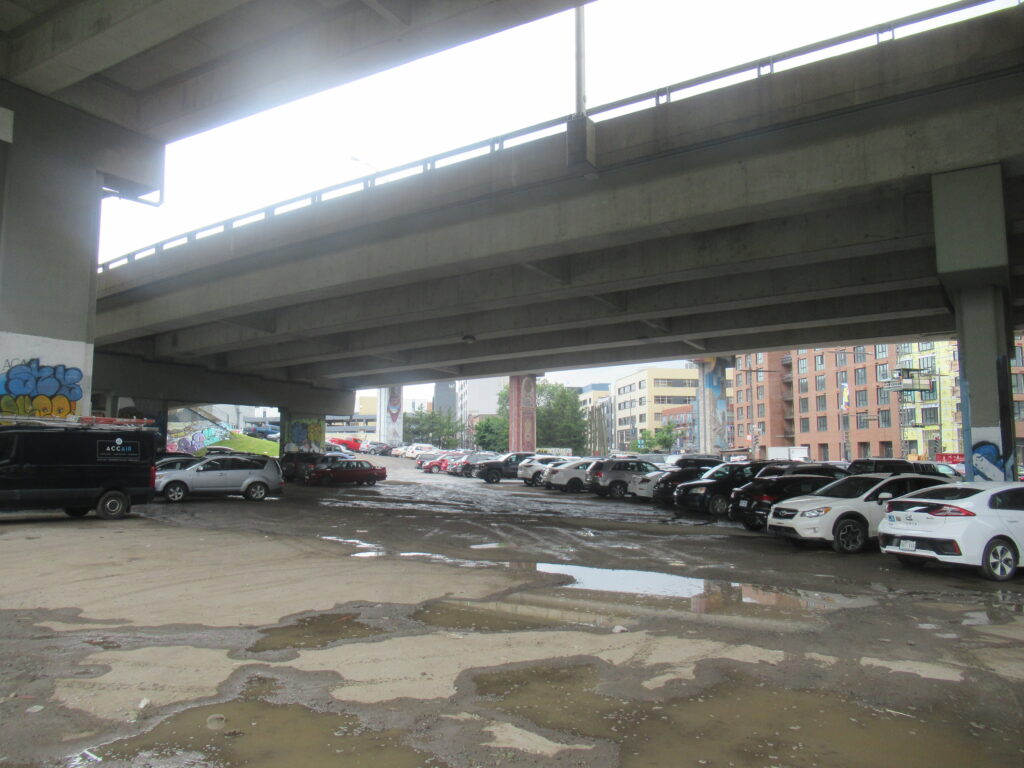It’s widely recognized that motorised road vehicles, such as motorbikes, cars, vans, and trucks, create environmental problems in the areas near roads. Anyone can feel it when walking along or across a busy road, or from their windows, if they face such roads. Noise, and air pollution are two of the most tangible problems.
There is less discussion, among planners and researchers, or in the media, about the negative visual aspects of roads and vehicles.
Yet, there is evidence that ugly roads are not a sight people like to see. The evidence is provided by the market, and the market usually knows what people prefer. Properties with views to ugly roads are cheaper than similar properties with views to more pleasant things. Evidence can be found here, here, and here (note: the first two are not open access and the third is in French).
What is an ugly road? Studies that investigated this question found that many people think that large roads are ugly. Road with lots of traffic are also regarded as ugly, although here we don’t know if the eyesore is the road itself to the vehicles using it. This is not an easy thing to analyse becasuse ugly roads have plenty of other problems (like noise and air pollution), so we cannot disentangle the visual problem from the other problems. I have written about that in this article.
Elevated roads are a notorious eyesore, as they are very intrusive in the visual environment. Because they are large, they also block views that people may want to see (like green areas, water, or the sky). And they are intimidating for pedestrians and cyclists, because of their high position and the shadows they cast underneath.

The visual intrusion caused by elevated roads can be aggravated by light from lamp posts or vehicles’ headlights, and by structures such as signs and billboards. Structures to reduce noise (such as barriers) increase visual intrusion.
Another problem with elevated roads is that the space underneath is often underutilized or neglected. This is because the pillars take up some space. In addition, the land becomes less valuable because of the road above and its noise and visual impact. Jane Jacobs wrote about that (see here and here). Note: you’ll see a lot of Jane Jacobs links in this blog.
The result is that we often end up with car parks underneath elevated roads. Or just empty space.

Visually intrusive elevated roads can disturb people at home, at work, or walking around. They reduce people’s satisfaction with the area where they live, affecting their mental health and wellbeing. If people walk less because the environment is ugly, then ugly roads also affect physical health.
The obvious solution for this problem is to remove the road infrastructure altogether, or putting it underground. One example is the Cheonggye Expressway in Seoul, which was removed to restore a stream and create a new park. Another example is the Central Artery in Boston, part of which was put underground, to create a park and a boulevard. This type of radical solutions is becoming more politically acceptable, as a way to increase quality of life in cities.
A less radical solution is simply to reconvert the space under elevated roads, making it more attractive to pedestrians, with green spaces or leisure and shopping areas. The Bentway in Toronto is an example. It is an ongoing project to give some utility and beauty to the space underneath an elevated motorway crossing the city. (See more about walking Toronto in another page of this website).
To say that a road is ugly is subjective. Some people are bothered with it, others don’t. Governments may believe that improving the wellbeing of some people (the ones who don’t like to see the road) is not enough to justify expensive and controversial projects to remove roads or reconvert the space underneath them.
But maybe the economic argument can convince them. Removing roads reclaims land to the city. That land has an economic value. It can be used for new businesses. And the absence of the ugly road may motivate people to spend more in existing businesses. The image of the city, as a whole, may improve, which can bring more visitors, residents, and businesses.
So maybe removing roads or making them less ugly is an investment that will pay off, both in terms of increased wellbeing and in a more narrow sense of “paying off”: it can make the cities wealthier.